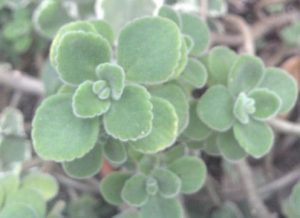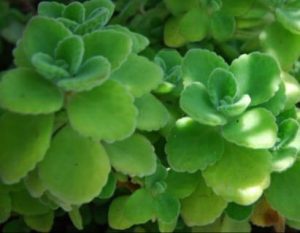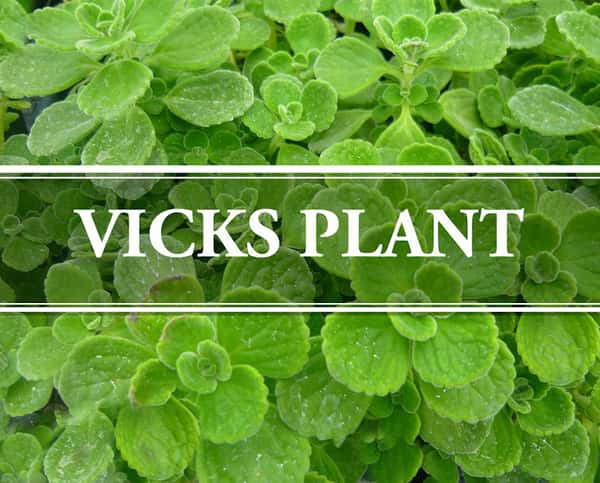Do you know a plant that smells like the famous decongestant Vicks? The Vicks Plant or the Plectranthus Tomentosa is a rare succulent, famous for its typical aroma. The small, dark-green leaves are fleshy and have scalloped edges. Additionally, they produce a refreshing menthol or Vicks-like smell when rubbed. This herb has a lovely cascading habit. A part of making fragrant hanging baskets, these are pretty useful as decongestants.
Want to grow this herb? Suitable for both indoor and outdoor environments, however, it is not winter hardy. Thus, you need to transfer the plant indoors in winter.
Let us know more about the Brazilian native perennial, the Vicks Vaporub plant along with its care and propagation.
Vicks Plant Classification
Family: Lamiaceae
Genus: Plectranthus
Species: P. hadiensis
Variety: Tomentous or Tomentosa.
Botanical name: Plectranthus hadiensis var. Tomentosa
We usually give a little introduction about the genus. Hopefully, it helps to have a better understanding of the plant.
Genus Plectranthus
Plectranthus is a genus of warm climate belonging to the mint family. About 350 different plant species are a part of this genus. These are commonly found in the Southern hemisphere, Africa, India, the Indonesian archipelago, Australia, and some Pacific Islands. These plants are commonly grown for decoration. Moreover, many of them serve as herbs, vegetables, and in the medicine industry.
These plants are commonly known as Spur Flowers. A number of plants belonging to an ancient genus are included with the Plectranthus. This genus was named ‘Coleus’ and is not recognized anymore.
Vicks Plant Common Names
- This plant is sometimes labelled as its ancient name ‘Succulent Coleus’.
- It is popularly referred to as Plectranthus Tomentosa, which is a short form of the botanical name.
- The name Plectranthus zatarhendii var. tomentosus is one of the synonyms.
Features of The Vicks Plant

Height and Structure
- A common mature plant grows up to 2 feet (60cm) and spreads about 2.5 feet (75cm).
- The plant body is decumbent and freely branched.
- The structure of these plants is variable according to the method of cutting and the growing place. They may form cascading vines, ground covers, or subshrubs depending upon the maintenance.
Leaves
- The size of a mature leaf is about 2 to 3 inches.
- Opposite leaves are covered with short hairy outgrowths.
Flowers
- The plant produces beautiful white to light purple Vicks Plant Flowers.
- The unique delicate flowers grow on long and thin stems.
- The plant blooms twice a year. Once in the early spring and later in the cooler days of the fall.
Toxicity
- It is always better not to let kids and pets mingle with plants. However, the Succulent coleus is generally known to be pet safe.
Vicks Plant Vs. Cuban Oregano
Both of these plants are often confused with each other due to their typical menthol-like aroma. However, Cuban oregano or the Plectranthus amboinicus is a herb with a number of common names including Mexican Mint and Spanish thyme. This is even sometimes mistakenly named as the Vicks plant.
Thus, be careful folks! You may get a different plant under the wrong label.
Vicks Plant Uses
This herb is used as a decongestant. Just boil some leaves in water to release the aromatic oils. The steam helps in clearing and healing the congestion of the nasal passage.
This plant works like a poultice. Moreover, it is used in making petroleum jelly-based Vicks ointments.
It’s a repellent for mosquitos. Thus, an indoor plantation helps to keep these nasty creatures at a bay from your room. In addition, it works as a worm repellent as well. It is important to mention here that these aromatic peeps are not suitable for your worm cultures.
Vicks Plant Care

If you are looking to get this aromatic herb, then it’s good news. This is an easy-to-care succulent, quite suitable for beginners.
Water Requirement
Succulents have a high content of water storage in the leaves. So, they can do well with medium to low water availability. Follow the ‘soak and dry’ method common for the succulents. Water the soil thoroughly and leave it to drain. Let the soil get dry before you water again.
Keep a check on the soil and create a routine in every weather.
The frequency of watering depends upon the temperature and humidity of your zone. We usually estimate to water about once or twice a week in summer. However, in winter, you may reduce the watering further.
Make sure the soil is having good drainage. Over-watering and any excess water at the foliage and roots invite fungus and root rot.
Sunlight Requirement
Bright indirect light is ideal for this aromatic plant. Additionally, they can tolerate partial shade as well. Just select a cool and well-lit shade preferably under the trees. the plant outdoors. On the other hand, a south-facing window with the dappled sun will be a nice location to keep your Vaporub Plant.
Just make sure you keep the succulent safe from direct exposure to the sun.
Temperature Requirement
A temperature range of 65 to 80 °F is usually ideal for the plant. These succulents have no tolerance for cold and frost. Thus, make sure you transfer the outdoor peeps to some warm indoor places, as soon as the fall arrives.
Older plants, usually more than a year develop woody stems at the base. This somewhat increases the resistance to cold temperatures.
Humidity Requirement
Succulents have tolerance towards different humidity levels. On dry days, you need to keep an eye on the plant. If it looks dry, consider using a humidifier around them. It is better to avoid misting these succulents. They are capable of surviving in arid environments and misting may lead to fungus and root rot.
Soil Requirement
Well-drained soil is essential for these plants. A mixture of peat moss and succulent mix in equal proportions is usually a good choice for these plants.
Fertilizer Requirement
These plants are not heavy eaters. You may use a common succulent fertilizer once a year in the early spring. It is better to use minute quantity or according to the directions on the pack. Liquid fertilizers are also a good option. These plants should never be over-fertilized because this may burn out the delicate foliage.
Cutting and Pruning Requirements
The plant has the capacity to get leggy. Thus, frequent cutting is helpful to maintain a robust look at your Tomentosa plant.
You may remove a few leaves from the basal sides of the plant. Pruning will show good results for plant health.
Growth Zone
This plant is hardy in USDA zones 9b to 11b from 25 °F to 50 °F.
Vicks Plant Propagation
The best way to propagate this plant is by stem tip cuttings. Springs and summer are the ideal seasons to root some Vicks stem cuttings.
Method
Cut about 3 to 4 inches of stem from a well-grown plant. Make sure you take at least 3 to 4 leaf nodes in the cutting. Moreover, snap about 1\4 inch below a node. It would be great to take 5 to 5 cuttings. This will increase the chances of successful propagation.
Now cut the leaves from the lower sides of stem cuttings.
Take some growth hormone and dip the base of the lower end of cutting in it. You can skip this step if you don’t have the product available in hand.
Plant the cuttings in a moist prepared growing setup. This setup could be a small container or a growing tray filled with suitable media. A mixture of potting soil and vermiculite mixture works well.
Place the setup in medium temperature and indirect light of medium to low intensity. Water the cuttings with a mild spray most every other day. This will ensure humidity. Make sure you avoid overwatering.
Water Propagation
These plants root in the water quite easily. Dip some cuttings in a small jar of filtered water. Change the water about twice a week and don’t let it go mucky.
Growth Timeline
Let us have a look at the estimated timeline of the Vicks Vaporub Plant.
Day 1–Day 60: Place the setup in a spot with medium temperature and indirect light. Mist frequently and avoid overwatering. Water propagation doesn’t need any effort other than regular water change.
Root development usually starts by the end of the third week.
Day 30 – Day 60: After the first month, tiny leaves start developing. Keep watering as in the previous month.
Day 60 onwards: After the end of the second month, the baby plants will show rapid growth. You can transfer them to a bigger container or different containers to get a number of plants.
Water peeps can also be shifted to soil containers. Or, you can let them grow in water to flourish for good.
Just follow the Vicks plant Care mentioned in the previous section and enjoy the development of this aromatic plant.
Summary
Vicks plant is a rare plant belonging to the famous mint family. This perennial herb is known for a typical aroma similar to the famous decongestant Vicks. The small green succulent leaves with scalloped edges grow oppositely on the cascading stems. This plant is suitable for both indoor and warm outdoor atmospheres. Moreover, it can be a ground cover, semi shrub, or a vine in the hanging baskets. The Vicks Plant Uses are as a decongestant in water or in petroleum jelly.

